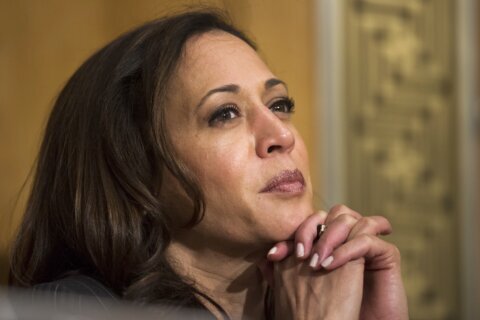Technical analysis is a valuable tool sophisticated investors use to research, analyze and evaluate stocks and other securities. Technical analysis is very different from fundamental analysis. Fundamental analysis tries to determine value and estimate the future market price based on a stock’s underlying fundamentals, such as revenue, earnings and sales. Technical analysis, on the other hand, ignores company fundamentals and relies on statistical charts to establish value and forecast prices.
The goal of technical analysis is to identify particular chart patterns that are thought to indicate directional trends or can predict price movements.
[Sign up for stock news with our Invested newsletter.]
Investors have likely been plotting stock prices and analyzing charts since the early days of stock trading, but modern technical analysis didn’t become an established practice until the late 19th century when standardized reporting and detailed record-keeping became more prevalent. Since that time, many thousands of chart patterns have been analyzed.
The main components of a stock chart are the time horizon, the stock price and the trading volume. Stock charts are usually expressed as line charts, bar charts or candlestick charts. Line charts and bar charts are used in all types of charting, but candlestick charts are exclusive to securities analysis.
A single candle formation on a candlestick chart conveys several data points. The upper and lower limits of the thick part — called the candle — represent the opening and closing prices of the target stock on an indicated date. On an up day, the lower end of the candle will be the opening price, while on a down day the lower end will be the closing price. Candlestick charts are often color-coded green or red to boot to indicate gains or losses. (Sometimes this is done as black and white, with black indicating down days and white indicating up days.)
The thin lines extending from the top and bottom of the candle are called wicks. The high point of the top wick represents the stock’s high for the period. The lowest point of the bottom wick shows the low.
Proponents of technical analysis believe that there is a large set of identifiable patterns that can reliably — though not definitively — predict both short- and long-term stock price moves.
Here’s our list of 10 popular and reliable stock chart patterns used in technical analysis:
— Head and shoulders pattern.
— Double top and double bottom pattern.
— Triangle patterns.
— Flags and pennants patterns.
— Cup and handle pattern.
— Wedge pattern.
— Rounding tops and bottoms pattern.
— Inverse head and shoulders pattern.
— Three white soldiers and three black crows pattern.
— Rectangle pattern.
Head and Shoulders
The head and shoulders pattern might be the most popular stock chart pattern in technical analysis. It gets its name from the fact that it resembles a human head flanked by a set of shoulders.
The pattern starts with a fairly sharp upward move, then a well-defined peak followed by a corresponding downward move, creating the left shoulder. After the left shoulder is formed, the stock rises to another peak that’s significantly higher than the left peak, marking the pattern’s head. The right shoulder is formed when the stock falls and rises once more, forming another peak lower than the top of the head.
[IMAGE]
A well-formed head and shoulders pattern is thought to indicate an imminent reversal of a price trend. That trend might be up or down.
Double Top and Double Bottom
Technical analysts are always on the lookout for double top and double bottom patterns. Many traders and investors believe that these patterns are among the most reliable at predicting price moves.
A double top is formed when a stock climbs abruptly and subsequently falls back to roughly the same level before staging another rally and dropping back once again. A double top will resemble the letter “M” to a greater or lesser degree. This pattern is confirmed when the stock falls below the two low points, or troughs, that were created.
Conversely, a double bottom will look like a “W” rather than an “M”. Double bottoms are formed when a stock falls and then climbs twice in relatively quick succession. This pattern is confirmed by the stock rising higher than the two visible peaks.
[IMAGE]
A double top is a bearish indicator. Analysts generally believe that a double top means that a rising stock is running out of steam. A double bottom, on the other hand, is bullish, and tends to indicate a weak stock is gaining momentum.
Triangles
Triangle patterns can be bullish, bearish or inconclusive. The defining aspect of an ascending triangle is higher lows. A descending triangle is indicated by lower highs. A neutral, also called symmetrical, triangle, forms its peaks and troughs within a narrow, flat range.
An ascending triangle pattern is established when a stock is generally climbing but encounters resistance and drops back before continuing upward. The price movements form a series of triangles across the horizontal axis of the chart. A line connecting the peaks of the triangles shows increasingly higher highs.
Descending triangle patterns are formed the same way but are found in falling rather than rising stocks. They are revealed in low points that are consistently getting lower.
[IMAGE]
Symmetrical triangle patterns likewise form little triangles by their ups and downs, but they will exist within a range and the direction that is establish is basically horizontal.
Triangles indicate ongoing trends. Upward triangles mean a stock should continue to go up. Downward triangles mean downward trends will continue. Symmetrical triangle patterns show that the market is neutral on the stock.
Flags and Pennants
If you are looking at a stock chart and see a rectangular shape, you may be looking at a flag pattern. If you see a small sharp triangle, it might be a pennant. Both of these popular stock chart patterns mean the same things to technical analysts. Flags and pennants can be bullish or bearish.
Flag patterns begin with a sharp vertical move either up or down. The initial move is called the flag pole. Next comes a prolonged period of consolidation that form parallel trendlines. The result is something that resembles a flag.
A pennant begins the same way by forming an almost vertical flag pole, but the duration of the stock’s consolidation is shorter and comes to a sharper point. This pattern looks more like a long triangular pennant than it does a broad flag.
[IMAGE]
Both of these popular patterns are taken to mean that the stock in question is experiencing a temporary pause before it breaks out in resumption of its established price trend. If a flag pole is pointing up, it’s bullish. If the flag pole is pointing down, it’s bearish.
Cup and Handle
Virtually all technical analysts view the cup and handle pattern as bullish because it’s generally formed during long-term uptrends. This pattern is made up of two converging components: the cup and the handle.
The cup portion happens when a strong uptrend is followed by a prolonged correction where the price falls over time. Observers will notice a rounded bottom that looks like a cup or bowl.
The handle is formed after the cup is strongly established. It is made when the stock price experiences a consolidation or pullback. The result is a downward sloping channel that looks like a handle to the cup.
[IMAGE]
A cup and handle means smart money is taking some profits off the table but is not dumping the stock. This is seen as a bullish indicator because analysts expect the stock will resume its upward trend after the short consolidation period ends.
[READ: How to Read Stock Charts]
Wedges
Wedge patterns come in two directional varieties; rising slope and falling slope. Technical analysts get quite excited when they recognize wedge patterns because they are one of the most reliable signals in the world of chart watching.
A rising wedge is formed by price consolidation among converging trendlines. Generally the upper trend slopes upward with the lower trend, which also slopes upward but at a much steeper angle. The pattern looks something like a narrowing triangle, pointing up and to the right.
[IMAGE]
As might be expected, a falling wedge is the converse of a rising wedge. In a falling wedge the new highs and lows trend downward, with the upper trend proceeding at a sharper angle. The triangle pattern that is formed here points down and to the right.
Falling wedges indicate a higher chance of a price reversal to the upside soon. A falling wedge is telling you to buy because if a breakout comes, it will be higher. A rising wedge indicates the opposite: The strength may be with the bears. Most traders will sell into a rising wedge pattern.
Rounding Tops and Bottoms
Rounding patterns, whether they’re forming tops or bottoms, are indicative of a slowly emerging reversal of an established trend. They are typified by a noticeable but gradual change in a stock’s direction.
Rounding top patterns happen during the final stages of an uptrend. A trained eye will notice that a stock has peaked and has begun a slow but steady decline. The resulting pattern looks like the top of a rolling hill or large dome. This pattern is confirmed when the stock breaks below support levels and fails to bounce back to make new gains.
Rounding bottoms occur at the end of downtrends when a stock appears to be making a slow but consistent turnaround. This pattern forms a basin or saucer shape as opposed to the hilltop shape of its counterpart. To confirm this trend, look for sustained but small breakouts above resistance.
[IMAGE]
A rounded top means that selling pressure is building, momentum is shifting and a downward trend is probably coming soon. A rounded bottom, however, is good news for bulls. It means buyers are gaining the upper hand and an upward breakout may happen soon.
Inverse Head and Shoulders
Once you’ve learned to spot the famous head and shoulders pattern, identifying the inverse head and shoulders will come easily. Inverse head and shoulders patterns happen most often after a long downtrend has run its course, meaning this pattern is highly bullish.
The left shoulder of this formation is indicated by a sharp downward move followed quickly by an upward bounce. The inverse head is made by another downturn and reversal but with a bottom that’s lower than the one formed by the left shoulder. Finally, the right shoulder is made by a down-and-up move that mirrors the left shoulder formation.
[IMAGE]
If you’re able to spot a solid inverse head and shoulders, congratulations! This pattern is thought to mean that a downtrend is ending and a bull run is about to begin. But before you start buying, confirm the pattern by waiting for a true breakout above the neckline, which is the line connecting the highs of the left and the right shoulders.
Three White Soldiers and Three Black Crows
The patterns indicated by what technical analysts call “white soldiers” and “black crows” can be difficult to spot, but are well worth the effort. These stock chart patterns are very strong directional indicators and can earn good profits for the investors who recognize them.
The three white soldiers formation is considered strongly bullish. It’s a candlestick pattern indicated by three consecutive long candles each with a higher top, or closing price. These candles are called white soldiers because some charts show higher closes as white or green candles. Traders confirm this pattern by looking for big increases in volume supporting each candle in the pattern.
The counterpart of the three white soldiers is the three black crows pattern. The candles that correspond to the crows trend downward and are often colored black or red. This very significant pattern is indicated by three long down-trending candles in a row. Again, the pattern is confirmed by increasing volume.
[IMAGE]
Three black crows are always considered bearish. If traders spot them, they may sell or even short the stock they’re watching.
Rectangle
Most of the patterns on our list are either bullish or bearish, meaning they are predicting a forthcoming up or down move. The rectangle pattern, also known as the trading range pattern, is different. It indicates that a stock is stagnating or consolidating and is not likely to move much in either direction.
A rectangle pattern is formed when the stock price moves up and down but remains between two horizontal lines, called trendlines. Trendlines show buying support on the underside and selling resistance on the high side. The stock chugs along in within the rectangle, confined within a certain price ceiling and price floor, without making much progress up or down.
What this usually means is that the market is undecided on whether to buy or sell the stock; neither the bulls nor the bears are in control.
[IMAGE]
Keep in mind, however, that this pattern can occur inside a broader upside or a downside trend. If you are interested in a stock but find it’s locked in a trading range pattern, keep your eye on it. If it breaks out above the trading range it may be time to buy. If it breaks out on the downside you can still make money by taking a short position (just keep in mind that shorting stocks is extremely risky).
More from U.S. News
7 Best Cryptocurrency Investing Strategies
5 Best Free Stock Analysis and Research Tools Online
10 Dependable Stock Chart Patterns for Technical Analysis originally appeared on usnews.com







